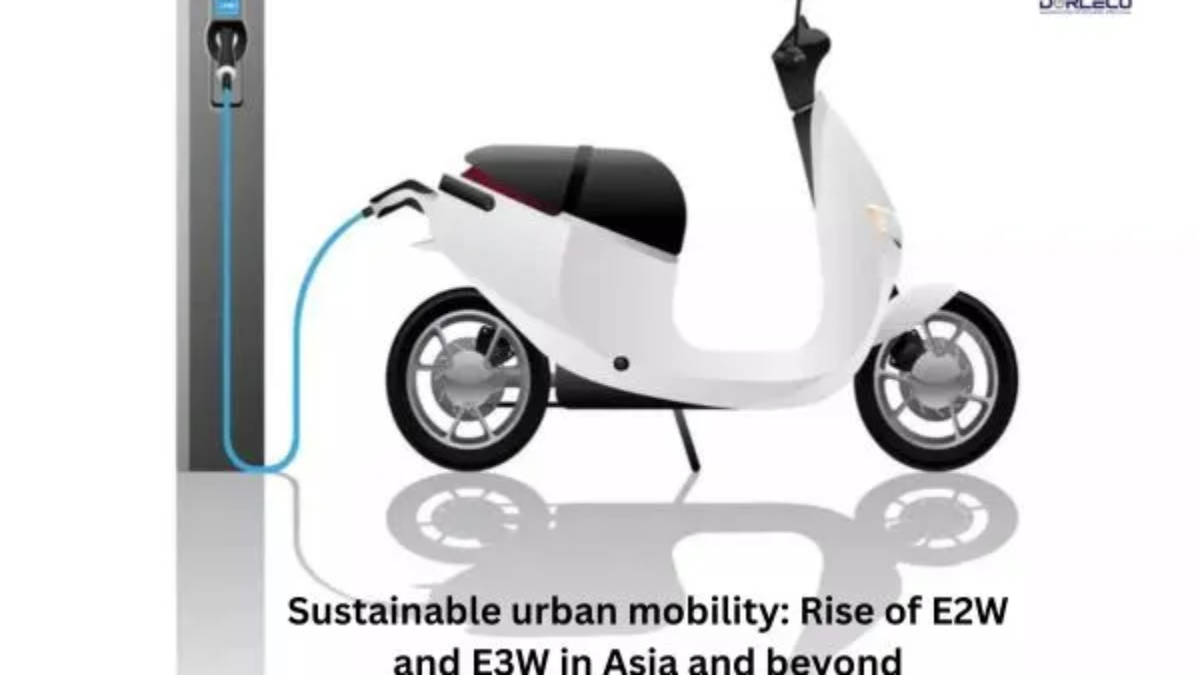The whole community is closely watching how electric two- and three-wheelers (E2W and E3W) are revolutionizing urban mobility as Asia leads the world in their adoption. With several instances from China, Japan, Indonesia, Vietnam, and other countries, the success of the electric transformation in Asia provides an encouraging model for other regions of the world. As more and more communities around the world embrace the efficient and environmentally favorable features of electric mobility solutions, this paradigm shift opens the door to a more sustainable global transportation future.
New Delhi: Two- and three-wheelers have evolved from being merely modes of transportation to become essential components of city life in Asia’s dynamic urban landscapes. Due to their cost, maneuverability, and skillful handling of crowded roadways, these cars have become the go-to option for millions of commuters in the area.
These ubiquitous automobiles are positioned to be a key player in the global shift to sustainable mobility. With half of the world’s population living in Asia, it is expected that the region would lead the way in the adoption of electric two- and three-wheelers (E2W and E3W), bringing with it a cleaner and more environmentally friendly future for global transportation.
For many years, the recognizable tuk-tuks have been a mainstay in South and Southeast Asia. These three-wheeled vehicles provide an economical and adaptable form of transportation, and they are frequently utilized for short-distance travel within cities and towns. In Bangladesh, electric rickshaws are becoming more and more popular. Passengers can travel in style and economy with these environmentally friendly cars.
‘Last-meter mobility’ is a key concept shaping global transit in the future, focusing on last-mile or short-distance movements inside transportation networks. These cars play a crucial role in the global promotion of sustainable transportation, especially because they are easier to maneuver on congested urban roads and have a smaller environmental impact than conventional internal combustion engine (ICE) vehicles. The introduction of a fuel-agnostic portfolio is a ground-breaking development in the history of global mobility, marking a significant step towards a more sustainable and adaptable future in transportation.
These vehicles’ eco-friendliness, affordability, and ease of use perfectly match the changing tastes of city dwellers. Likewise, Vietnam’s electric two-wheeler adoption is surging due to its bustling metropolitan terrain. In addition to being a useful mode of transportation, these cars also considerably lessen the carbon impact of highly inhabited areas.
Encouraging the global adoption of electric two- and three-wheelers requires prioritizing teamwork. putting a focus on the exchange of best practices, technological advancements, and legislative frameworks while also pushing for more funding for R&D to promote the efficiency, affordability, and adaptability of electric vehicles.
Crucial actions include incorporating these vehicles into urban planning, putting incentives in place, and emphasizing the creation of jobs via skill development. Participation in the community is also crucial, particularly in places like India where lives and livelihoods depend heavily on transportation.
The world is closely watching how electric two- and three-wheelers (E2W and E3W) are revolutionizing urban mobility as Asia leads the world in their adoption. With several instances from China, Japan, Indonesia, Vietnam, and other countries, the electric transformation’s success in Asia provides an encouraging model for other regions across the world. The adoption of eco-friendly and efficient features of electric mobility solutions by communities across the globe is paving the road for a more sustainable global transportation future.

